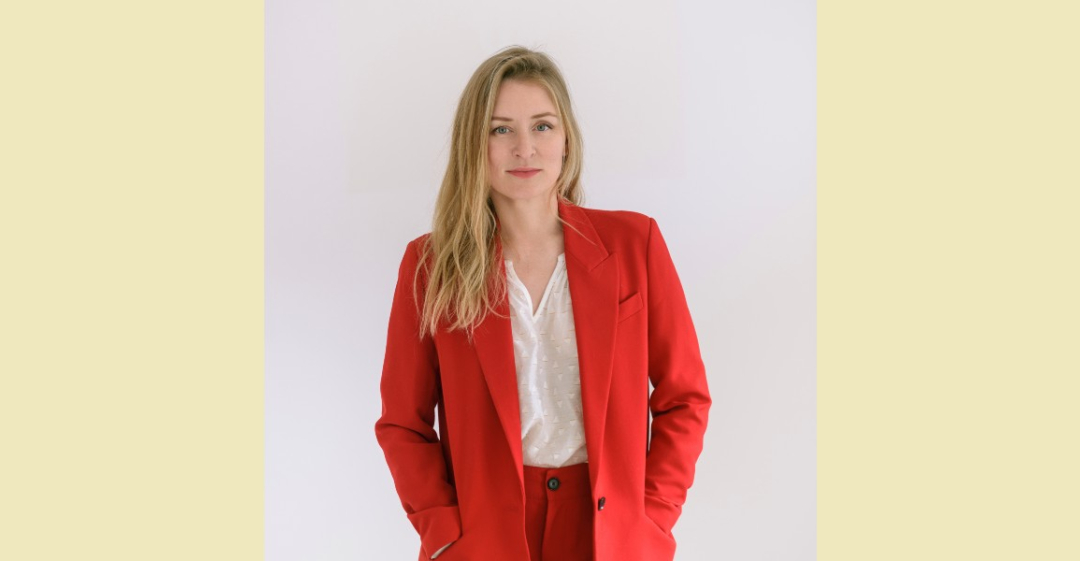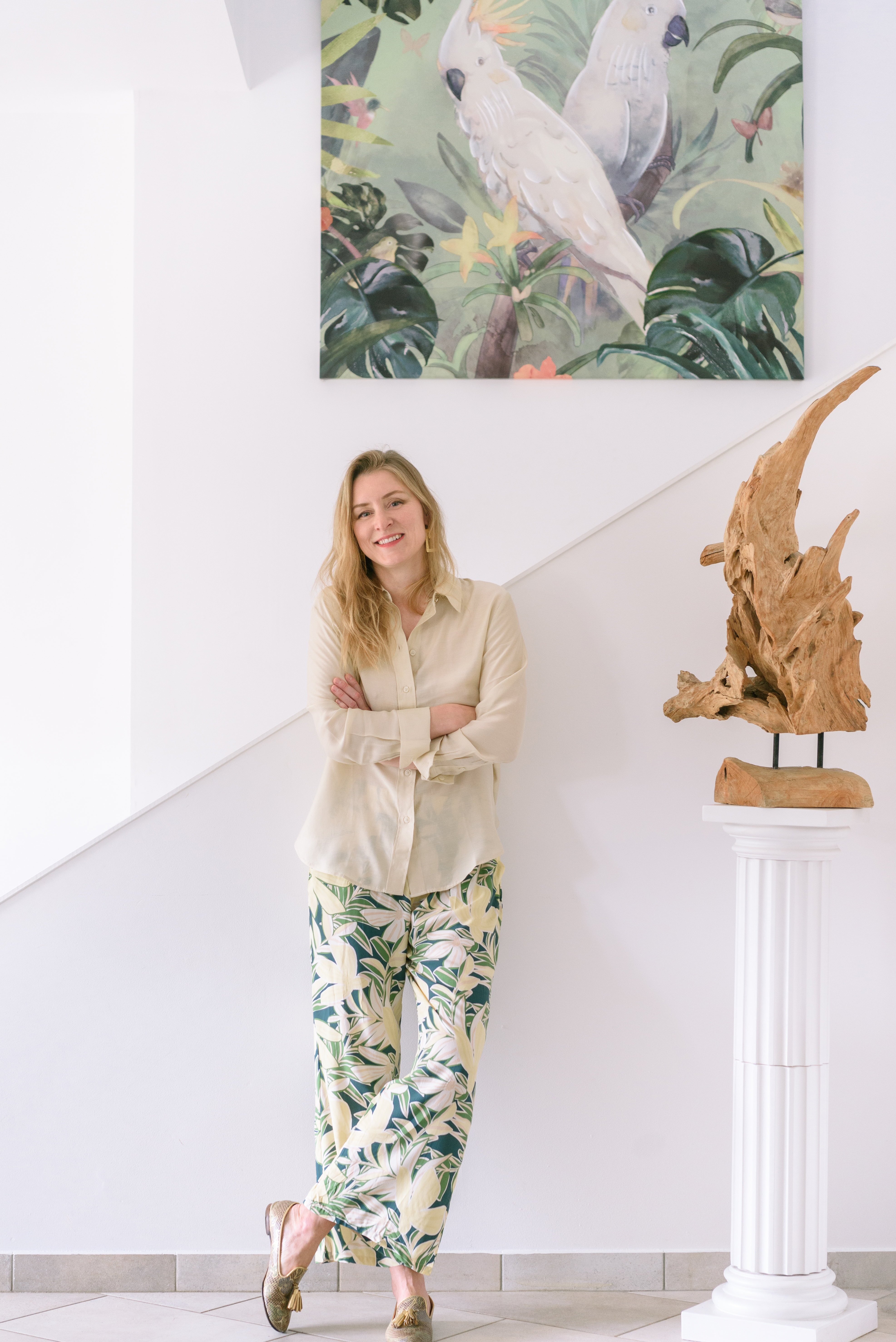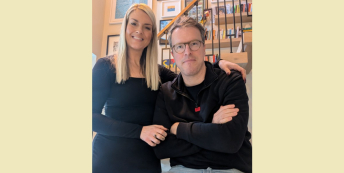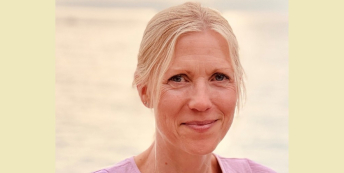“I found that success without meaning didn't sustain me.”

What work were you doing previously?
I worked in academic institutions focused on Earth observation and space research.
I completed my PhD in Physics in 2013. This included a postdoctoral position at NASA and a role as Scientific Secretary at the Institute of Physics in Belarus.
Later, I transitioned into the private New Space sector, where I focused more on the business side, particularly public-private partnerships and proposal development for ESA, the European Commission, and CNES (the French space agency).
At the same time, I’ve always been drawn to the arts. I hold a Bachelor’s degree in Art History, and for four years I ran an art gallery as a side project.
What are you doing now?
I’ve always oscillated between two worlds: space and art and eventually realised that I can’t live without either.
After leaving my full-time position in the space sector, I began working independently as a consultant for tech startups through yanakarol.com.
My MBA helped me structure this transition and develop a more strategic approach to business and innovation.
At the same time, I’ve been building Space in Frames, an educational and creative platform that explores how art and science shape our understanding of the cosmos.
It’s an ambitious attempt to bring together my two lifelong passions and it’s not an easy path.
I’m still at the beginning, learning how to balance the analytical and the artistic, the pragmatic and the poetic.
Why did you change?
Because I realised that success without meaning doesn’t sustain me.
I loved working in space research, but over time it became clear that I was missing the human and cultural dimension of what we do.
Science gives us knowledge, but art gives us context and I wanted to live at that intersection.
I didn’t change because I was lost or unhappy. I changed because I wanted my work to reflect my curiosity, my values, and my commitment to something larger than just technological progress.
I wanted to explore how space influences culture and imagination and how art can, in turn, reshape the way we think about space.
When was the moment you decided to make the change?
I remember the exact moment.
I was on a train from central Paris to Saclay, heading to my new job in the space industry, when it suddenly hit me that I wasn’t living my own life. I was following a path that made sense on paper but didn’t feel like mine.
Somewhere between the stations, I realised I needed to create something of my own. Something original that only I could do, built on my education, experience, and values.
It sounds obvious now, but at that moment it felt like a revelation, almost electric.
I understood that I didn’t have to choose between art and space; I had to bring them together. That thought felt completely new and alive.
How did you choose your new career?
I’m not sure I’d even call it a new career – it’s more like a path I’m still mapping. I didn’t switch from one defined role to another; I decided to build my own space in between.
With my usual dose of impostor syndrome, I thought I should “legitimise” this shift by studying art management. But very quickly I realised I was overqualified for the programme I’d chosen. I didn’t need more classes, I needed to act.
Still, it’s not easy. I’m moving through a new territory where there are no clear job titles, and that’s both exciting and frightening.
Are you happy with the change?
I wouldn’t say I’m happy – at least not in the conventional sense.
I’m still anxious, often uncertain and constantly questioning myself. But I know one thing for sure: I would've been deeply unhappy if I hadn’t made this change.
It’s not a comfortable path, but it feels like the right one.
What do you miss and what don't you miss?
I do miss the scientific environment.
The intellectual atmosphere is hard to replace.
What I don’t miss at all is the structure: reporting, hierarchy, and the quiet politics of public institutions. I’m too independent for that.
I like collaborating with people, but I don’t like being managed. Freedom comes with uncertainty, but I’ll always take that over routine obedience.
How did you go about making the shift?
I didn’t make a dramatic leap, but built a bridge.
I continued consulting for start-ups while gradually developing my own projects in art and education. I try to keep one foot in reality while the other explores new ground – and I dream that one day these projects will become my main work.
How did you develop (or transfer) the skills you needed for your new role?
Most of what I use now comes from earlier stages of my career, I just apply it differently.
My scientific background taught me discipline, research methods and critical thinking. My MBA helped me structure ideas, manage projects and understand the business side of innovation.
Art history brought a completely different perspective and now I’m also exploring the practical side of art myself: I work with ceramics in Vallauris, the town where Picasso left a prominent mark.
In a way, I didn’t need to learn new skills, I just had to connect the ones I already had.
What didn’t go well? What wrong turns did you take?
I definitely made some wrong turns.
The biggest one was going back to study art management and thinking I needed external validation for what I was already capable of doing.
It turned out to be a detour that cost me time and energy, but it also made one thing very clear: I don’t need more diplomas; I need to keep building.
I also tried to collaborate with too many institutions at once, believing that momentum meant progress. It didn’t.
Focus is much harder than work. That’s one of the main lessons I’ve learned.
How did you handle your finances to make your shift possible?
I was pragmatic about it.
I kept consulting for start-ups, which covered part of my expenses and allowed me to invest time into my creative and educational projects.
I also had some savings, and, most importantly, people close to me who believed in what I was doing.
Knowing that they would support me even if I stumbled made it possible to take the risk of leaving a stable job.
Without that safety net, both emotional and financial, I probably wouldn’t have dared.
What was the most difficult thing about changing?
The hardest part was entering a new world where none of my previous achievements really counted.
No matter how many degrees or titles you have, when you step into a different field, you start from zero and people often look at you with polite skepticism.
I struggled to take the posture of the beginner after being an expert for many years. In the program that I mentioned earlier, I even found myself having to defer to a director whose position I could probably fill more effectively myself.
That experience taught me a lot about patience, ego and the strange politics of hierarchy.
What help did you get?
I’m deeply grateful to a few people who believed in me when I wasn’t entirely sure myself.
In particular, the professors at SKEMA Business School, where I did my MBA, continue to be incredibly supportive.
I also take inspiration from artists, historians, and philosophers who work across disciplines.
I admire their courage and independence, and I hope to find my place among them – with my own voice and my own way of connecting worlds that usually stay apart.
What have you learnt in the process?
I’m still learning.
When I look back, I see how much my perspective has changed, how strangely ideas behave over time. But the most important thing is action.
You have to sit down and write, create, paint, sculpt, give a lecture. Whatever it is, it leaves a trace. That trace is proof of progress.
Clarity comes through doing. Big journeys start with small steps and mistakes are not only inevitable, they’re useful – as long as you fail fast and move on.
What do you wish you'd done differently?
I wish I’d started earlier.
I spent too much time waiting for permission – from systems, from people and sometimes from myself.
I’m very sensitive to devaluation. In the Russian-speaking online world, even the most accomplished people are often met with cynicism or open hostility. So you can imagine what happens to someone who’s just starting to speak out.
I’ve been called useless more times than I can count and it made me afraid to use my voice.
But being visible matters, even when it’s uncomfortable. Haters are, in their own twisted way, a sign of impact. So yes, I wish I’d begun much earlier.
Still, better late than never and in the end, I don’t really regret anything.
What would you advise others to do in the same situation?
I recently heard a piece of advice that really stayed with me: believe the one who believes in you.
If you have even one person who genuinely believes you’re on the right path, that’s already half the battle.
The rest is noise: envy, fear, or both. Trust the one who believes in you and keep going.
What resources would you recommend to others?
I’d recommend Ways of Curating by Hans Ulrich Obrist.
It’s full of insights on how cultural ideas are born and how exhibitions evolve from a single spark into a shared experience.
It’s also a reminder that curation, in any field, is about connecting people and meaning, not just objects or data.
Another invaluable source is the Space Culture Bibliography compiled by the Kosmica Institute, a brilliant collection of texts that explore the intersections of art, science, and the cosmos.
It’s one of the rare resources that truly embraces multidisciplinary thinking.
And beyond books, I’d say: create your own references. Write, teach, experiment. Each action becomes its own form of research and, over time, your practice becomes your library.
To find out more about Yana's platform, visit https://spaceinframes.substack.com/
What lessons could you take from Yana's story to use in your own career change? Let us know in the comments below.



